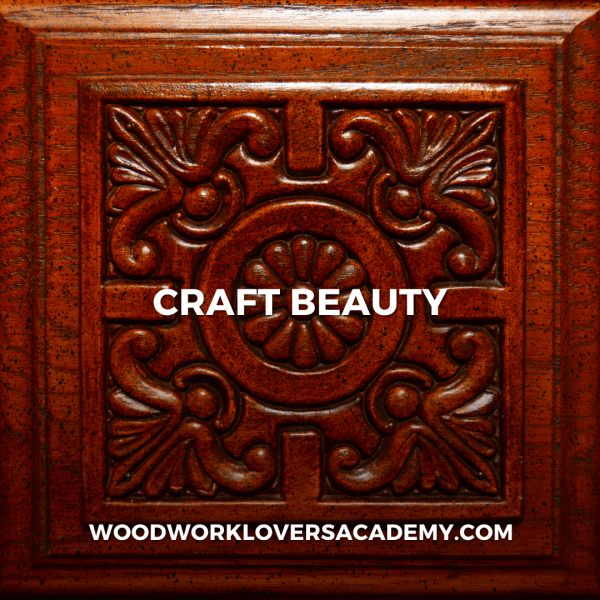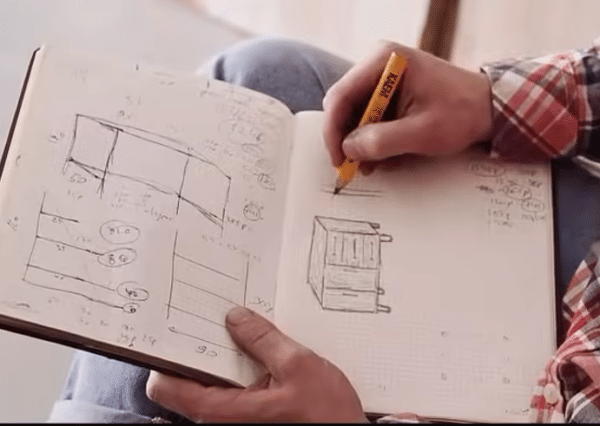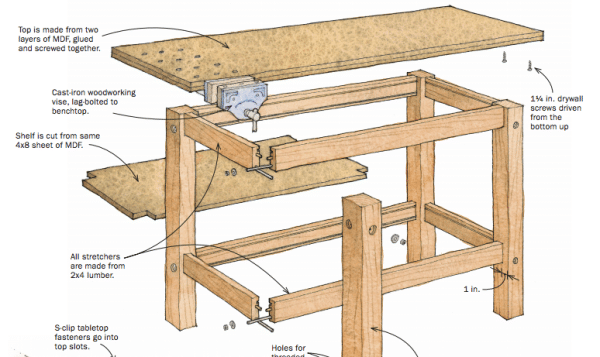Woodworking is an art form that allows you to connect with the timeless beauty of wood and unleash your creativity. Whether you're a beginner or an experienced woodworker, the journey of transforming raw materials into unique, awe-inspiring pieces is both fulfilling and empowering. This article will guide you through the various aspects of artistic wood projects, from choosing the right wood to mastering advanced techniques, ensuring that your creative visions come to life.
Key Takeaways
- Woodworking is a creative and fulfilling art form that allows you to produce unique pieces.
- Choosing the right type of wood and understanding its grain and texture are crucial for any project.
- Essential tools, both hand and power, are necessary for precision and safety in woodworking.
- Mastering basic and advanced woodworking techniques can significantly elevate the quality of your projects.
- Sustainable practices in woodworking help in preserving the environment while allowing you to create beautiful pieces.
Exploring the Beauty of Natural Wood

When you embark on a woodworking project, you enter a world where your imagination is the limit. The possibilities are endless, whether you're crafting a beautiful dining table that will become the centerpiece of your home or a delicate wooden jewelry box that will hold your most cherished possessions. The process of transforming raw materials into a finished piece with your own woodworking tools is a magical experience that connects you to the rich history of craftsmanship.
Selecting the right wood is crucial for the success of your project. Different types of wood offer various textures, colors, and strengths. Hardwoods like oak and maple are excellent for furniture, while softwoods like pine are great for decorative items. Consider the wood's grain, durability, and how it will react to different finishes.
The grain and texture of wood can significantly impact the final look of your project. Straight grain is easier to work with and gives a clean, uniform appearance, while wavy or curly grain can add a unique character. Understanding these aspects will help you make informed decisions and achieve the desired aesthetic.
Sustainability is becoming increasingly important in woodworking. Look for suppliers who offer sustainably sourced wood to minimize your environmental impact. Reclaimed wood is also a fantastic option, giving new life to old materials and adding a touch of history to your creations.
Woodworking is not only about replicating existing designs; it’s about channeling your creativity to produce unique, awe-inspiring pieces. The journey begins with a simple sketch or a detailed blueprint. As you work, you’ll make choices that impact the final outcome — the type of joints to use, the finish that suits the project, and the small details that make it yours. Woodworking is a canvas where your imagination can run wild.
Essential Tools for Artistic Wood Projects
No artisan is complete without their tools, and woodworking is no exception. From hand tools like chisels, planes, and saws to power tools such as routers and sanders, the right tools can transform a project from ordinary to extraordinary. Understanding how to use these tools effectively, whether you’re a beginner or a seasoned pro, is crucial for bringing your creative visions to life.
Must-Have Hand Tools
Investing in quality tools will save you time, frustration, and ultimately, money. Start with the basics: a reliable table saw, a versatile router, a sturdy workbench, a set of chisels, and a quality set of hand planes. These tools will form the foundation of your woodworking endeavors and enable you to complete a wide range of projects.
Power Tools for Precision
With these advanced tools in your woodshop, you'll be able to take your woodworking skills to the next level. Whether you're building furniture, crafting intricate designs, or simply honing your woodworking techniques, having the right tools will make the process more enjoyable and rewarding.
Safety Gear and Best Practices
A skilled woodworker is only as good as their tools. Building a well-equipped woodshop is crucial for executing projects with precision and efficiency. While the exact tools you'll need will depend on the specific projects you undertake, there are a few essential tools that every DIY woodworker should have in their arsenal.
Designing Your Woodworking Masterpiece

Sketching Your Ideas
Unleashing your inner creativity starts with a simple sketch. Woodworking is not only about replicating existing designs; it’s about channeling your creativity to produce unique, awe-inspiring pieces. The journey begins with a simple sketch or a detailed blueprint. As you work, you’ll make choices that impact the final outcome — the type of joints to use, the finish that suits the project, and the small details that make it yours. Woodworking is a canvas where your imagination can run wild.
Creating Detailed Blueprints
Once you have your initial sketch, it's time to create a detailed blueprint. This step is crucial as it serves as the roadmap for your project. A well-thought-out blueprint will help you visualize the final product and plan each step meticulously. From selecting the perfect lumber to deciding on the type of joints, every detail matters. Precision in this stage can save you a lot of time and effort later on.
Incorporating Personal Touches
The beauty of woodworking lies in the personal touches you add to your projects. Whether it's a custom engraving, a unique finish, or an unconventional design element, these details make your piece truly one-of-a-kind. Think about what makes your project special and how you can incorporate those elements. Remember, the small details often have the biggest impact.
Mastering Basic Woodworking Techniques
Cutting and Shaping Wood
Cutting and shaping wood is the foundation of any woodworking project. Mastering these skills will allow you to create precise and intricate designs. Start with basic tools like saws and chisels, and gradually move on to more advanced equipment as you gain confidence.
Joining Techniques
Understanding different joining techniques is crucial for building sturdy and long-lasting projects. From traditional dovetail joints to modern pocket screws, each method has its own advantages. Experiment with various techniques to find what works best for your projects.
Sanding and Finishing
Sanding and finishing are the final steps that bring your project to life. Proper sanding ensures a smooth surface, while finishing adds a protective layer and enhances the wood's natural beauty. Use a variety of sandpapers and finishes to achieve the desired look and feel.
As you work on these projects, you'll learn the importance of choosing the right type of wood, understanding grain patterns, and using basic tools like saws, chisels, and sandpaper. Each step will build your skills and knowledge, setting the foundation for future endeavors.
Advanced Techniques to Elevate Your Craft
Intricate Carving Methods
Intricate carving methods can transform a simple piece of wood into a stunning work of art. Mastering these techniques requires patience and practice, but the results are incredibly rewarding. Start with basic patterns and gradually move to more complex designs as your confidence grows.
Wood Inlay and Marquetry
Wood inlay and marquetry involve embedding pieces of wood or other materials into a wooden surface to create detailed images or patterns. This technique adds a layer of sophistication to your projects. Precision is key here, so take your time to ensure each piece fits perfectly.
Using Stains and Dyes
Using stains and dyes can dramatically change the appearance of your wood projects. These finishes can highlight the natural grain or add a pop of color. Experiment with different products to find the perfect finish for your masterpiece. Remember, the right stain or dye can make your project truly unique.
DIY Wood Projects for Beginners

Starting your woodworking journey with beginner projects is a fantastic way to build foundational skills and gain confidence. These projects are designed to be simple yet practical, allowing you to practice essential techniques without feeling overwhelmed. Embarking on these projects will introduce you to the fundamental techniques of woodworking and set the stage for more complex challenges in the future.
Challenging Projects for Experienced Woodworkers
Custom Furniture Pieces
Creating custom furniture pieces is a true test of your woodcraft mastery. These projects often involve intricate joinery, detailed carvings, and a deep understanding of wood properties. Whether it's a bespoke dining table or a unique bookshelf, custom furniture allows you to showcase your skills and creativity.
Outdoor Structures
Building outdoor structures like gazebos, pergolas, or even a treehouse can be incredibly rewarding. These projects not only require advanced woodworking techniques but also demand knowledge of weather-resistant materials and construction principles. Successfully completing an outdoor structure will not only enhance your skills but also provide a beautiful addition to your outdoor space.
Complex Decorative Items
For those who love a challenge, complex decorative items such as wooden clocks with moving parts or intricate wall art can be the perfect project. These items often require precision, patience, and a keen eye for detail. Tackling such projects will push your boundaries and expand your capabilities.
As you tackle these challenges, you'll develop a deeper understanding of wood properties, expand your tool collection, and refine your woodworking techniques. Each project will stretch your skills and ignite your passion for the craft, propelling you further along your woodworking journey.
Personalizing Your Wood Projects
Adding unique details to your wood projects can make them truly one-of-a-kind. Consider incorporating elements like decorative carvings, inlays, or even mixed media to give your piece a distinctive flair. Personal touches can transform a simple project into a cherished keepsake.
Custom engravings are a fantastic way to add a personal touch to your woodworking projects. Whether it's a name, a special date, or a meaningful quote, engraving can make your piece uniquely yours. You can use hand tools or laser engravers for precision and detail.
Combining wood with other materials like metal, glass, or fabric can create stunning contrasts and add complexity to your projects. This approach not only enhances the visual appeal but also opens up new possibilities for creativity. Experimenting with different materials can lead to unexpected and beautiful results.
Personalizing your wood projects is all about infusing them with your unique style and creativity. Don't be afraid to experiment and let your imagination run wild.
Sharing Your Woodworking Creations
Displaying Your Work at Home
Completing a woodworking project is a triumph in itself, but sharing your masterpiece with the world adds another layer of fulfillment. Whether you gift your creation to a loved one, display it in your home, or even sell it to an appreciative audience, your craftsmanship becomes a part of someone else’s story. It’s a testament to the enduring legacy of woodworking — the ability to touch lives through artistry.
Gifting Handmade Items
Handmade items make for incredibly personal and cherished gifts. When you gift a piece of your woodworking, you’re not just giving an object; you’re sharing a piece of your creativity and effort. The joy on the recipient’s face is often the best reward for your hard work.
Selling Your Creations Online
In today’s digital age, selling your woodworking creations online has never been easier. Platforms like Etsy, eBay, and even your own website can help you reach a wider audience. Here are some tips to get started:
- Create high-quality photos of your work.
- Write detailed descriptions, highlighting the unique aspects of each piece.
- Set a fair price that reflects your time, effort, and materials.
- Promote your listings through social media and online communities.
Sharing your woodworking creations can be incredibly rewarding, both emotionally and financially. It allows you to connect with others who appreciate the artistry and effort that goes into each piece.
The Therapeutic Benefits of Woodworking
Stress Relief Through Craftsmanship
Woodworking offers more than just a creative outlet; it has therapeutic benefits that can improve mental well-being. Engaging in woodworking allows individuals to enter a state of flow, where time seems to disappear, and focus is solely on the task at hand. The rhythmic process of shaping wood, the tactile sensation of handling tools, and the satisfaction of seeing a project take shape can provide a sense of calm and accomplishment.
Building Patience and Focus
Woodworking is a journey that teaches patience, persistence, and the rewards of perseverance. The detailed nature of woodworking projects requires careful planning and execution, which helps in building focus and attention to detail. The process of crafting something tangible from scratch can be incredibly fulfilling, offering a sense of achievement that is hard to replicate with store-bought items.
Connecting with Nature
The scent of sawdust, the feel of wood under your fingertips, and the satisfaction of creating something tangible from scratch — these are the experiences that woodworking offers. Working with natural materials allows you to connect with nature in a unique way, fostering a deeper appreciation for the environment. This connection can be both grounding and inspiring, making woodworking a truly holistic activity.
Woodworking is a captivating world that offers endless possibilities for creativity and craftsmanship. Whether you’re a novice or an experienced woodworker, exploring woodworking can ignite a sense of fulfillment, allowing you to create beautiful and meaningful pieces that will be cherished for years to come.
Sustainable Practices in Woodworking
Eco-Friendly Finishes
When it comes to woodworking, choosing eco-friendly finishes is a great way to reduce your environmental impact. Opt for finishes that are low in volatile organic compounds (VOCs), as they are less harmful to both you and the environment. Water-based finishes are a popular choice among woodwork lovers academy wla - lesson 5: choosing the right finish for your project. They provide a durable and beautiful finish without the harsh chemicals found in traditional finishes.
Recycling and Upcycling Wood
Recycling and upcycling wood are fantastic ways to give new life to old materials. By using reclaimed wood, you not only reduce waste but also add a unique character to your projects. Look for wood from old barns, pallets, or even furniture that can be repurposed. This approach not only saves trees but also adds a sense of history and charm to your creations.
Supporting Sustainable Forestry
Supporting sustainable forestry is crucial for the future of woodworking. Choose wood suppliers who practice responsible forestry management. This means they harvest wood in a way that maintains the health of the forest and ensures it can regenerate. By doing so, you help preserve forests for future generations and promote a more sustainable woodworking industry.
Embracing sustainable practices in woodworking not only benefits the environment but also enhances the beauty and uniqueness of your projects. It's a win-win for both you and the planet.
Conclusion
Woodworking is more than just a hobby; it's a journey of creativity and craftsmanship. From the initial sketch to the final product, each project is an opportunity to express your unique vision and skills. As you embark on your woodworking adventures, remember that the process is just as rewarding as the finished piece. So, grab your tools, let your imagination run wild, and create something truly special. Happy crafting!
Frequently Asked Questions
What types of wood are best for beginners in woodworking?
For beginners, softer woods like pine or cedar are recommended. They are easier to work with and more forgiving when making mistakes.
How do I choose the right wood for my project?
Consider the project's purpose, the wood's grain and texture, and whether the wood is sustainably sourced. Hardwoods are great for furniture, while softwoods are suitable for decorative items.
What are the essential tools I need to start woodworking?
Basic hand tools like chisels, hammers, and saws are essential. As you advance, you may want to invest in power tools like a table saw or a router for precision.
How can I ensure my woodworking projects are sustainable?
Use eco-friendly finishes, recycle and upcycle wood, and support sustainable forestry practices by choosing certified wood suppliers.
What safety gear do I need for woodworking?
Safety gear such as goggles, ear protection, and dust masks are crucial. Always follow best practices to avoid accidents.
Can I combine woodworking with other materials?
Yes, combining wood with materials like metal, glass, or fabric can add unique details and elevate your projects.
How do I start designing my woodworking project?
Begin with a sketch of your idea, then create detailed blueprints. Incorporate personal touches to make the project uniquely yours.
What are some simple DIY woodworking projects for beginners?
Start with simple projects like shelving units, picture frames, or basic wooden toys. These projects will help you build foundational skills.








